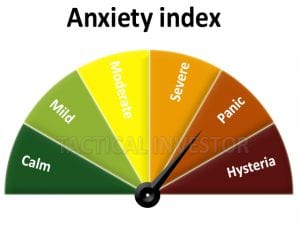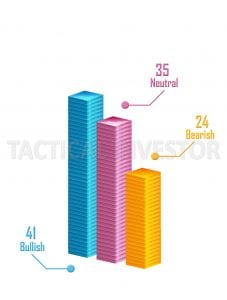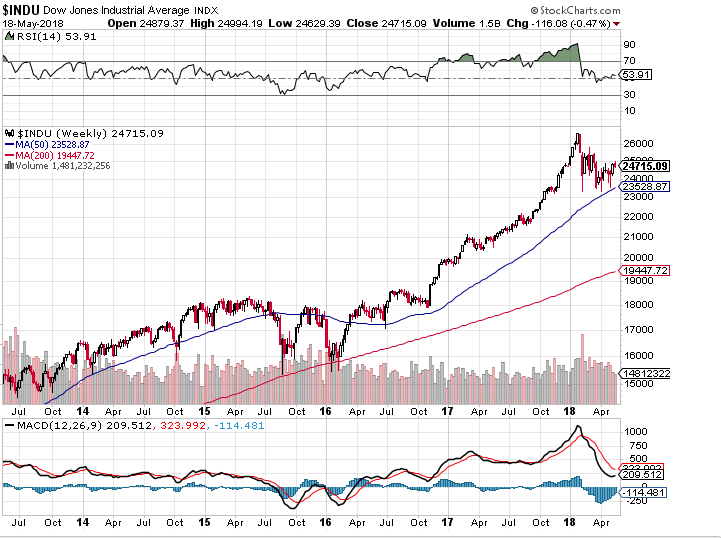
Will the Stock Market Crash? Resilience Amidst Uncertainty
Feb 8, 2024
Debunking Stock Market Crash Fear: Why It’s Nonsensical
For ages, stock market crashes have been the favourite bogeyman of so-called financial gurus. They love to play the prophet of doom, painting a picture of an imminent financial apocalypse just around the corner. But is this fear rooted in reality? Is the next crash really going to end the financial world as we know it? History tells us otherwise.
The truth is that stock market crashes are generally low-probability events. Yes, they do occur, but their frequency is far less than these financial fearmongers would have you believe. And, here’s the kicker – every single crash in history has proven to be a golden opportunity for those who dared to defy the conventional wisdom.
Let’s take a stroll down memory lane. The Great Depression in the 1930s, the Black Monday of 1987, the dotcom crash at the dawn of the 21st century, the housing market crash of 2008-2009, and most recently, the COVID-19 crash of 2020. Each financial disaster was touted as the cataclysm that would end prosperity.
But what actually happened? Not only did the market recover each time, it roared back with a vengeance, reaching new heights and bringing bountiful returns for those brave enough to swim against the tide.
Each catastrophe was precisely that – a catastrophe, but only for those who listened to the soothsayers and sold out in a panic. They lost their investments, their security, and quite possibly, their peace of mind. On the other hand, those who ignored the alarmist rhetoric and seized the opportunity to buy low reaped dividends beyond their wildest dreams.
In conclusion, the fear of stock market crashes is a largely baseless hysteria stoked by those who profit from panic. The reality is that crashes are part and parcel of the financial world, and far from being the end of the world, they can be the beginning of prosperity for those who dare to think differently. So, the next time you hear a doom-laden prediction of a market crash, remember the facts and keep your cool. You might just find a fortune amidst the fear.
Let’s examine the topic from a historical perspective. Those who learn from history are less likely to repeat mistakes.
Will the Stock Market Crash: Inevitable, But Here’s Why It’s Not The Endgame
The main factor that confirms all is well is our trend indicator. It is bullish, so all market pullbacks have to be viewed as buying opportunities.
Secondary indicators confirming that Dow is not going to crash
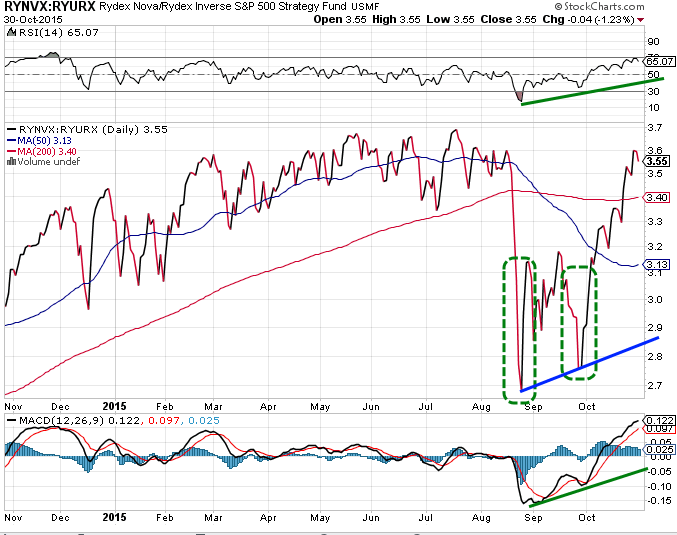
When the ratio moves to the extreme, as shown above, when you see that, it is a signal to pay attention. Used with several other indicators, it could provide (advance) warning of a bottom or top. It has put in an excellent higher low formation, but the ascent up was too fast, so a pullback to the 2.9-3.2 ranges is warranted. This pullback will coincide with a pullback in the markets. A stock crash occurs when the masses are euphoric. Until that moment, the markets are unlikely to crash. However, individual stocks will crash in a bull or a bear market as that event depends on what management does or does not do.
The Dow has a minor zone of resistance in the 17250 range; if it closes above this level, then it should be able to trade to the 17500-17600 range. At that point, the Dow should reverse course and trade down to the 16500-16700 range. Market Update, Oct 17th, 2015
Dow is looking to let out steam.
The Dow has been performing exceptionally well, and it’s expected to have a slight correction soon. As the overall trend is strongly positive, any pullbacks would be an excellent opportunity to buy high-quality stocks at discounted prices. We would be thrilled if the market corrected significantly, as it would give us a chance to purchase stocks at even lower prices. The market could even test the 17700 range, and we could analyze it further from that point. We are ready to make the most of the market’s temporary decline and take advantage of the panic that will cause most investors to sell their stocks. We could buy quality stocks at a low price.
The V-readings have also increased significantly, indicating that the trading ranges have widened. The market’s direction is determined by its trend, and as the current trend is bullish, we expect that the Dow will rise significantly more than it would fall. If the Dow pulls back, we expect it to drop to at least the 16500 range, but if it drops even lower, we would consider it a blessing.
It is sitting right at resistance now; the 170 ranges provide a decent resistance zone. It needs to close above this on a weekly level. If it can achieve this, it will set the way for a move up to the 180 and, subsequently, 190 plus ranges. Market Update, Oct 17th, 2015
Broker-Dealer index flashing a long-term bullish signal
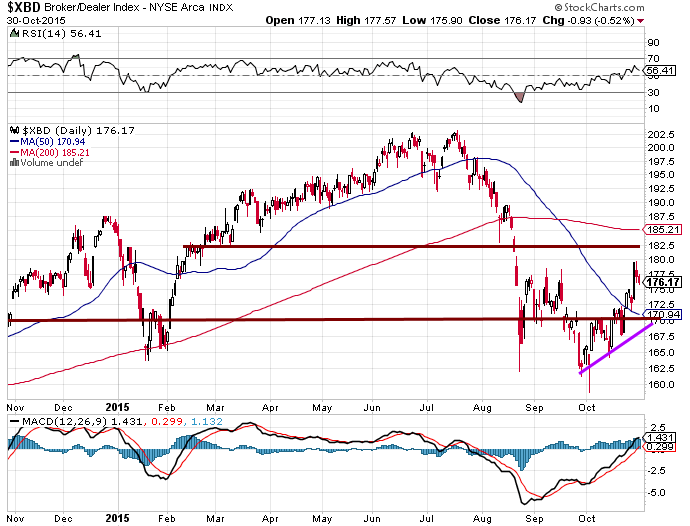
The XBD trade has closed above 170 on a weekly basis, which is a positive sign for the market. The next resistance level is at 183.00, and there is a high probability that it could break through that zone in the short term and even double before experiencing a firm pullback. Although the index is currently trading lower than its highs, there is no need to worry. This is a healthy correction that will help build momentum for a significant upward trend. The Dow utilities are also performing well, indicating a positive outlook for the future, according to the Tactical Investor Dow Theory.
SP 100 development is a Bullish Development.
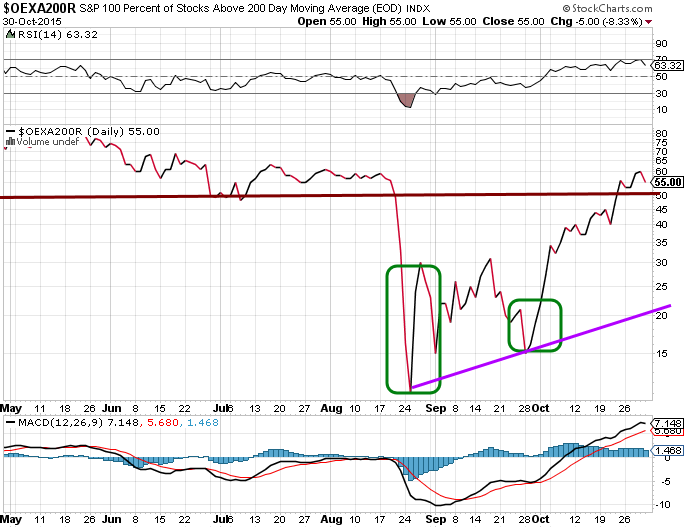
Experts will have you believe it’s a bad omen if more than 50% of the SP 100 stocks are trading below their 200-moving average. It’s faulty advice at best and rubbish at its worst; when the trend is up (and the trend is up), this development has to be viewed through a bullish lens. Why? Because it allows the astute investor to purchase top-quality stocks at a discount. We have never had a stock crash when the trend is up. Once again, your best options are to focus on the trend and ignore the noise from commercial outlets.
Should you fear a stock crash in 2018?
According to the market sentiment, it is unlikely that there will be a stock crash. Even though the bullish sentiment is around 41%, the combined score of the neutral and bearish indicators suggests that the market may experience a pullback at most. While a correction would not be surprising, it would be a welcome development in our opinion. The majority of people tend to make the wrong decisions, such as bailing out when they shouldn’t or buying when they should sell. Don’t follow their lead if you don’t want to lose money.
The Trend is Positive
The trend is positive, so all sharp pullbacks should be embraced. As soon as the markets start to let out some steam, bullish sentiment will plunge, and bearish sentiment will soar. It’s Groundhog Day every day for the masses; they never learn; their only solace is that misery loves company and stupidity demands it. A stock crash is not in the works and will not be in the works until the masses embrace this bull market.
Conclusion
History is a treasure trove of lessons, a vast repository of precedents that can guide us in the present and future. This is particularly true in the realm of financial markets. As we navigate the tumultuous seas of investing, the compass of historical perspective can be our most reliable guide.
The adage, “Those who cannot remember the past are condemned to repeat it,” rings particularly true in the context of stock market crashes. Time and again, we’ve seen the cycle of boom and bust play out, accompanied by the same chorus of doomsday predictions. Yet, each crash has invariably been followed by a recovery, often leading to new market highs.
The Great Depression, the Black Monday of 1987, the dot-com bubble burst, the 2008 financial crisis, and the COVID-19 market crash were unique, yet they all shared a familiar pattern. Initial panic, followed by recovery and growth. Those who understood this pattern and learned from history, instead of being swayed by fear, were able to turn these crises into opportunities.
The key to this understanding lies in taking a historical perspective. This means not just knowing what happened in the past, but understanding why it happened, the underlying factors, and how people reacted. It’s about recognizing the patterns and learning from them.
For instance, one of the recurring themes in market crashes is the role of fear and herd mentality. Fear takes over when the market starts to tumble, leading to panic selling. This herd behaviour often exacerbates the crash, turning a market correction into a full-blown crash. But history has shown us that this is usually the best time to buy when prices are low and the market is poised for a rebound.
Another lesson from history is the importance of diversification. The dotcom crash of the early 2000s was largely due to overinvestment in tech stocks. Those who had diversified their portfolios were better able to weather the storm.
In conclusion, while we cannot predict the future, we can learn from the past. By taking a historical perspective, we can avoid repeating the same mistakes and make more informed decisions. So, the next time you hear predictions of a market crash, remember the lessons of history. Don’t let fear dictate your decisions. Instead, use the wisdom of the past to guide your future actions.
Other Articles of Interest

The Art of Investing for Income in Retirement: Refined Strategies for Financial Grace
Unlocking Real Estate Investing for Beginners with No Money

Potential of Silver ETF-s: A Wise Investment Choice

USD Dollar Index Investing: A Posh Way to Hedge Against Currency Fluctuations

Are ESOPs Good? The Alluring Benefits of Employee Ownership

Stock Market Psychology Pdf: Mastering the Facts, Not the PDF

Cracking Market Cycle Psychology: Navigating the Ups and Downs

Best Silver ETFs: Shining Bright in Your Investment Portfolio

Harnessing the Psychology of a Market Cycle: Thrive in Bull and Bear Markets
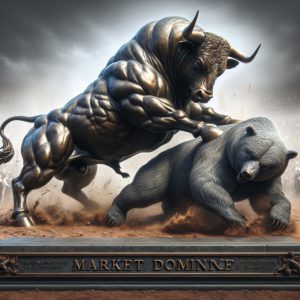
What is a Bull Market Simple Definition: Understanding the Basics of a Thriving Market

Why is investing in a mutual fund less risky than investing in a particular company’s stock?

What is a Bull Market? Unleashing its Power

Elliot Wave Theory: Navigating the Pitfalls

AI Takeover Theory: Humanity’s Crossroads with AI’s Future Impact

Financial Freedom vs Financial Independence: Your Wake-Up Call to Take Control
Stock Market Crash: Imminent, or does this Stock Market Bull still have legs?


